Development boards are printed circuit boards set up so that someone can learn to program the processor onboard. They help simplify the setup and eliminate the clutter associated with using breadboards, but while there are a plethora of dev boards on the market, only a few actually deserve your money and time. Let’s take a look at what makes the cut.
Qualcomm DragonBoard 410c
Qualcomm’s new development board is based on their 410 processor with low cost in mind. This feature rich board is perfectly set up for IoE products with its credit card sized form factor.
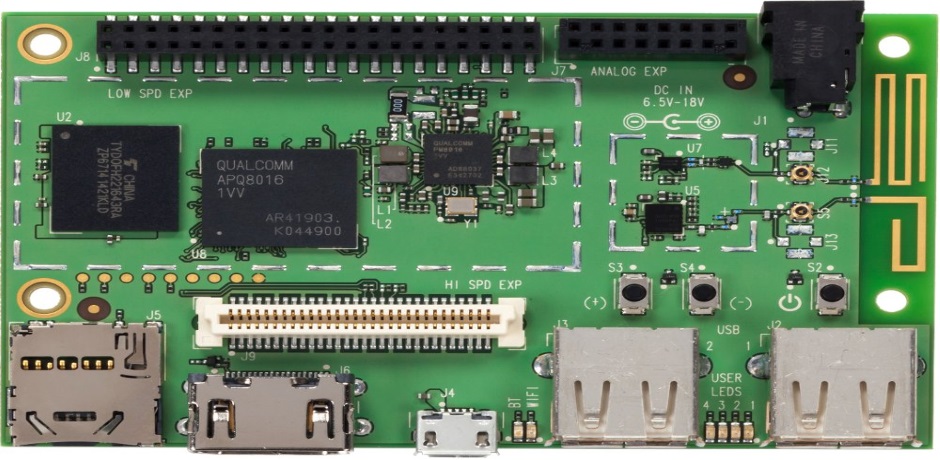
The DragonBoard muscles the competition with the aforementioned 410 processor clocked at 1.2GHz with 64 bit capability. Graphics processing is handled by a Qualcomm Adreno 306 GPU clocked at an impressive 400MHz. This boards supports great photo/video output with 1080p video and photos captured in 13MP with noise reduction.
Connectivity is certainly on par with a Qualcomm VIVE Wi-Fi, Bluetooth and FM chip while supporting Android and Linux operating systems. Expansion systems are stout as well with 1x 40 pin Low-Speed connector (UART, SPI, I2S, I2C x2, GPIO x12, DC power), 1x 60 pin High-Speed connector (4L-MIPI DSI, USB, I2C x2, 2L+4LMIPI CSI) and Analog expansion connector (Headset, Speaker, FM antenna).
Other interfaces include an HDMI, USB 2.0 micro, 2 USB 2.0 type A, and micro SD. Overall this is a well-equipped board that can be cheaply integrated into your design process.
Raspberry Pi 2
The Raspberry Pi dev board is has become the go to board for makers and tinkerers around the world. It’s inexpensive at $39 so anyone can get one and there are hundreds of “recipes” online for making various gadgets.
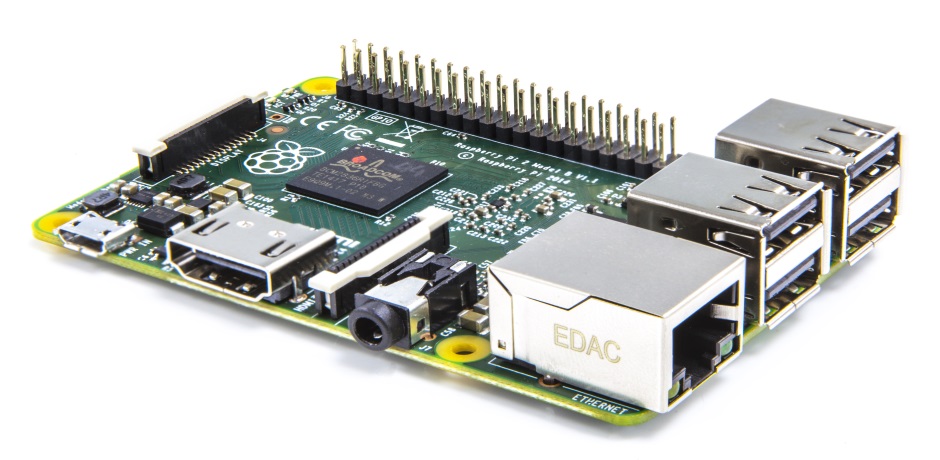
It’s loaded with great features like a speedy 900MHz quad-core processor, 1GB of RAM, 4 USB, 40 GPIO pins, HDMI, Ethernet, micro SD, and camera/display interfaces to name a few. The Raspberry Pi 2 is trimmed down but has all of the things you could want in an easy to use dev board that’s actually affordable.
Intel Galileo
Intel makes a truly innovative dev board with a slightly larger form factor than the Raspberry Pi that’s designed to push the development of the IoT. The onboard 400MHz Quark X 1000 processor is designed to be thrifty on power but quick.
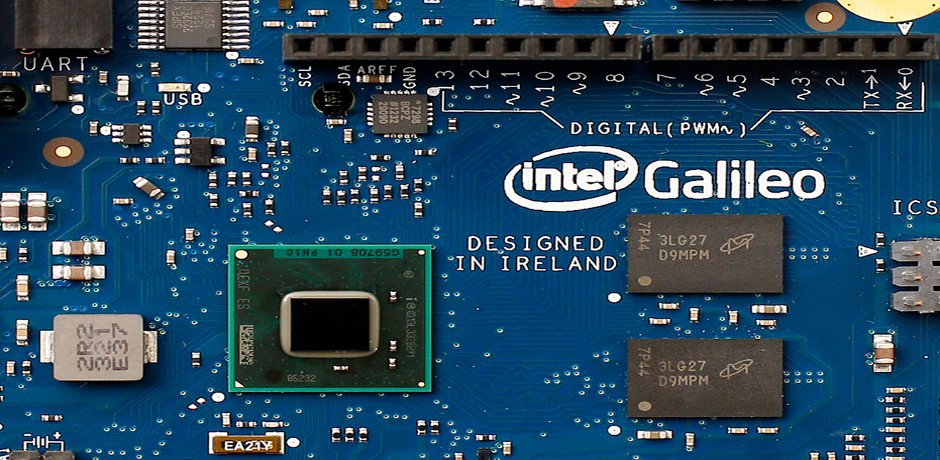
The Galileo doesn’t have a GPU which helps contribute to its low power consumption but it does have many other great features. Some of these features are: a real time clock, USB interface, and Micro SD. This is a great little card and the Intel Galileo can be had for $70 for your next project.
BeagleBone Black
The BeagleBone Black is a great board to compare to the Raspberry Pi as they are in the same price range and have similar features. Priced at a very reasonable $45, the Black features a speedy AM335x 1GHz ARM Cortex A8 and 512 DDR3 RAM. The fun doesn’t stop there though.
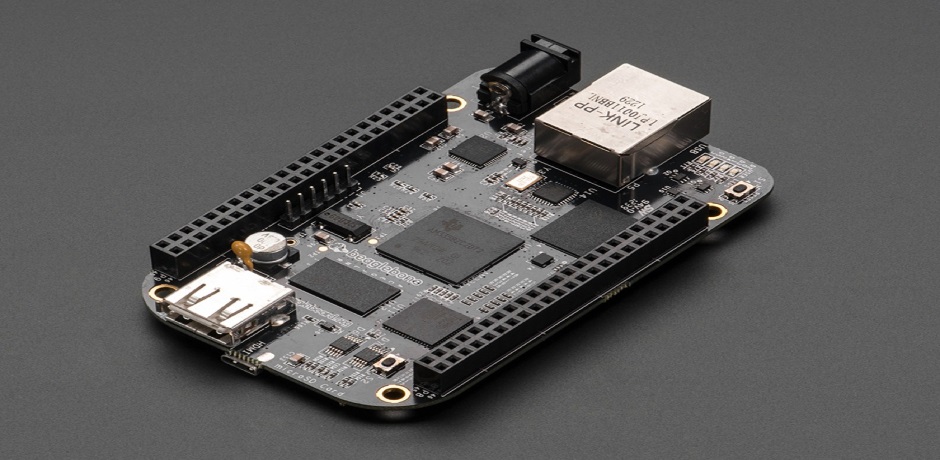
There is also an HDMI output, USB, Ethernet, and 2x 46 pin connectors for great connectivity. The software compatibility is really impressive as well as BeagleBone will work just fine with Debian, Android, Ubuntu, and Cloud9 to name but a few.
Spark Core
Last but certainly not least is one of my favorites, the Spark Core development board which weighs in at a thrifty $39. I feel like inexpensive is becoming a theme here. Sporting an STM32 micro-controller and a Texas Instruments CC3000 Wi-Fi module, it is perfectly suited for tinkering.
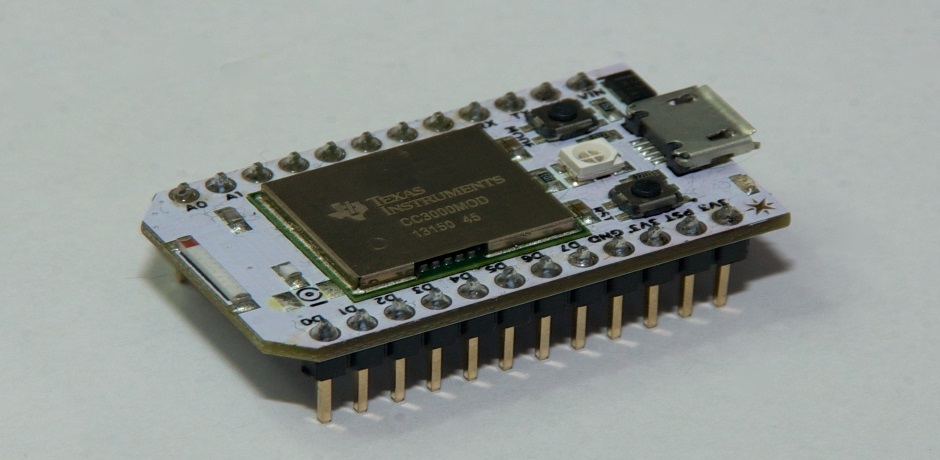
This little guy is so popular it’s actually sold out on their website but never fear for they have one heck of a selection. There are also the slightly bigger Electron and Photon to choose from for you bread board adventures.
Advertisement
Learn more about Electronic Products Magazine





